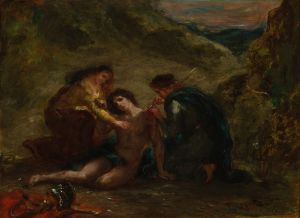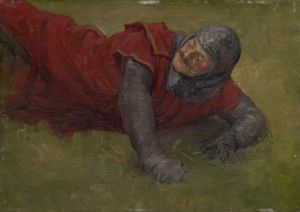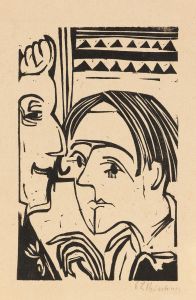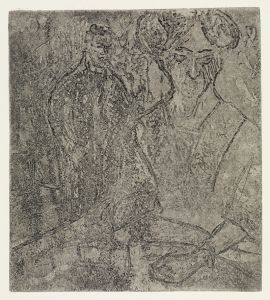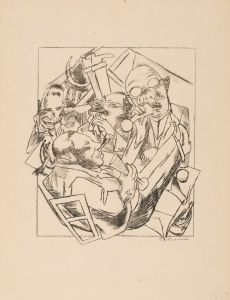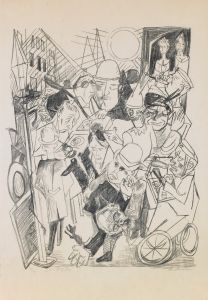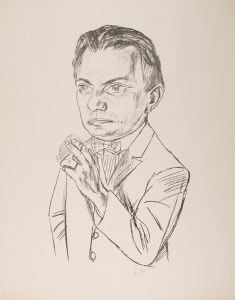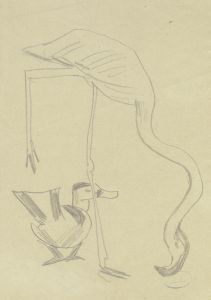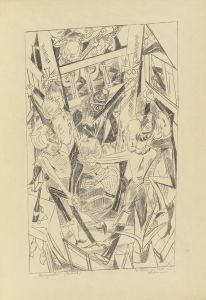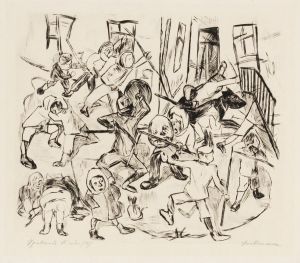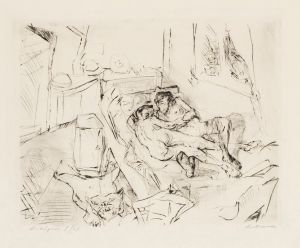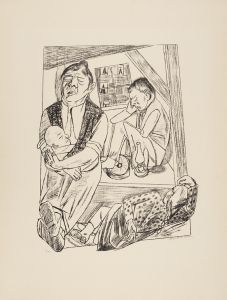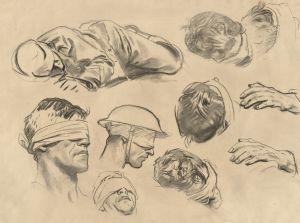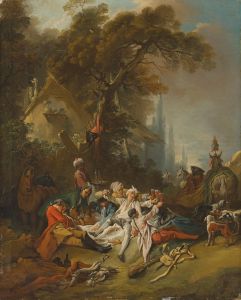
Assault
A hand-painted replica of Max Beckmann’s masterpiece Assault, meticulously crafted by professional artists to capture the true essence of the original. Each piece is created with museum-quality canvas and rare mineral pigments, carefully painted by experienced artists with delicate brushstrokes and rich, layered colors to perfectly recreate the texture of the original artwork. Unlike machine-printed reproductions, this hand-painted version brings the painting to life, infused with the artist’s emotions and skill in every stroke. Whether for personal collection or home decoration, it instantly elevates the artistic atmosphere of any space.
"Assault" is a painting by the German artist Max Beckmann, created in 1905. Beckmann, born in 1884 in Leipzig, Germany, was a prominent figure in the German Expressionist movement, although he himself rejected the label of Expressionism. His work is known for its bold use of color, complex compositions, and often intense emotional content.
"Assault" is one of Beckmann's early works, painted during a period when he was exploring various styles and themes. This painting reflects the influence of Impressionism and Post-Impressionism, movements that Beckmann studied during his early career. The painting depicts a chaotic scene, capturing a moment of violence and turmoil. The composition is dynamic, with figures intertwined in a struggle, conveying a sense of movement and tension.
The painting is notable for its use of color and form. Beckmann employs a palette that includes deep reds, blues, and blacks, creating a dramatic contrast that heightens the emotional impact of the scene. The brushwork is vigorous and expressive, contributing to the sense of immediacy and action. This approach to color and form would become characteristic of Beckmann's later work, as he developed a more personal and distinctive style.
"Assault" can be seen as a reflection of the social and political climate of the time. The early 20th century was a period of significant upheaval in Europe, with rapid industrialization, social change, and the looming threat of war. Artists like Beckmann were responding to these changes, using their work to explore themes of conflict, alienation, and the human condition. While "Assault" does not depict a specific historical event, it captures the sense of anxiety and uncertainty that characterized the era.
Beckmann's career was profoundly affected by the events of the 20th century. He served as a medical orderly during World War I, an experience that had a lasting impact on his work. The trauma of the war and the subsequent political instability in Germany influenced his artistic development, leading him to create works that grappled with themes of suffering and existential crisis.
After the rise of the Nazi regime, Beckmann's work was labeled as "degenerate art," and he was dismissed from his teaching position at the Städelschule in Frankfurt. In 1937, he fled Germany, eventually settling in the United States, where he continued to work until his death in 1950. Despite the challenges he faced, Beckmann remained a prolific and influential artist, leaving behind a legacy that continues to be studied and appreciated.
"Assault" is an important work in Beckmann's oeuvre, representing a formative period in his artistic development. It exemplifies his early exploration of style and theme, setting the stage for the more complex and mature works that would follow. Today, Beckmann is regarded as one of the most significant artists of the 20th century, and "Assault" remains a testament to his skill and vision.





